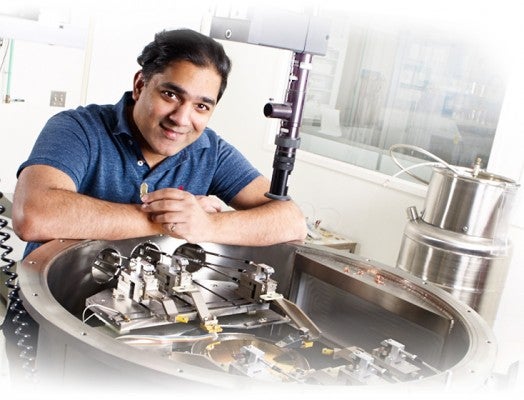A Waterloo Engineering spinoff company has received a multi-million dollar injection from Intel Capital.
AdHawk Microsystems, co-founded by engineering alumni, has raised a $4.6 million USD Series A funding that will bring its microscopic eye-tracking technology to virtual reality and augmented reality headsets.
Intel Capital led the Series A investment round, with participation from Brightspark Ventures and the founders of AdHawk, which develops advanced microsystems for human-computer interaction.
Current VR/AR headsets equipped with eye tracking systems rely on cameras to keep track of where the user is looking, and it takes immense computing power to process the hundreds of images per second the cameras capture. As a result, these headsets need to be tethered to a power supply and a high-end computer.
AdHawk’s eye tracker replaces the cameras with ultra-compact micro-electromechanical systems – known as MEMS – that are so small they can’t be seen by the naked eye. These MEMS eliminate power-hungry image processing altogether, resulting in order-of-magnitude improvements in the speed, form factor and energy efficiency of the VR/AR units that carry them, while delivering resolution on par with expensive, research-grade systems.
The AdHawk system is so fast that it can accurately predict where the user will look next, up to 50 milliseconds (50 one-thousandths of a second) in advance. This capability will enable designers to enhance the element of surprise for gamers, help optimize the placement of ads in VR/AR media, render portions of scenes in advance and provide negative latency to make human-computer interaction seamless.
AdHawk CEO and co-founder Neil Sarkar, whose microsystems research at

“Creating a sense of total immersion, through an untethered, responsive and unobtrusive headset, is the ultimate goal of the VR/AR community,” said Sarkar, a Waterloo Engineering post-doctoral fellow.
“We believe our technology will go a long way to enabling headset makers to deliver that experience to their users.”
AdHawk is developing additional sensor technologies to create new experiences for its users and is working on capturing and analyzing data from multiple sensors to derive greater insight. Upcoming products include a low-power, ultra-precise gesture sensor and a point cloud scanner module for super-resolution 3D sensing.